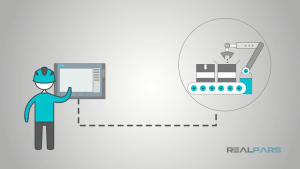cybersecurity advancements
- The term “cybersecurity advancements” refers to the innovative tools, techniques, and methods created to defend networks, systems, and data against online attacks. The cybersecurity advancements demand for advanced and proactive cybersecurity solutions is increasing as the digital world becomes more linked cybersecurity advancements. The following are some significant developments in cybersecurity:
- Cybersecurity Using AI and Machine Learning:
Threat detection: Compared to traditional approaches, AI can detect anomalies and possible threats more quickly by analyzing large volumes of data and finding patterns.
Automated response: By automating reactions to cyberattacks, machine learning algorithms can reduce the need for human interaction.
- Behavioral analytics: AI examines user behavior and highlights anomalous activity that can point to a security risk.
Architecture of Zero Trust:
No one, inside or outside the network, is automatically trusted in a zero trust architecture. Tighter security is ensured by requiring constant user and device verification before allowing access to resources.
To reduce attack surfaces, it emphasizes identity verification, least-privilege access, and micro-segmentation.
Innovations in Cloud Security:
Cloud-native security has arisen as more companies shift to the cloud, and it includes - Extended Response and Detection (XDR):
In order to identify, look into, and address cyberthreats, XDR is an integrated security solution that integrates data from several security layers (endpoint, network, server, etc.).
It improves response time and lessens the impact of assaults by offering a more comprehensive and up-to-date view of security issues. - Security Orchestration and Automation:
Security automation improves response times and lessens the workload for security teams by automatically detecting and responding to attacks without human interaction using scripts and machine learning. - Security orchestration ensures a more efficient defense mechanism and streamlines workflows by integrating many security tools and technologies.
- Advanced Data Protection and Encryption:
To guard against potential future threats from quantum computing, which could crack conventional encryption techniques, quantum-resistant encryption is being developed.
Homomorphic encryption protects privacy even when data is being processed by enabling calculations on encrypted data without the need to decrypt it. - Intelligence and Threat Hunting:
Threat hunting is a proactive strategy in which experts in cybersecurity actively look for.Threat intelligence is the process of obtaining information about cyberthreats, disseminating that information, and applying it to predict and lessen potential attacks. - Authentication via Biometrics:
To improve security and guarantee that only authorized users are granted access, biometric information such as fingerprints, facial recognition, or retinal scans is increasingly being used for access control.
It assists in doing away with the necessity of passwords, which are frequently susceptible to hackers. - Using Blockchain Technology in Cybersecurity:
By producing unchangeable transaction records, blockchain can improve security by making it more difficult for hackers to alter data.
It provides tamper-proof techniques for data storage and validation and is utilized for smart contracts, data sharing, and secure identity management. - Protection Against Ransomware:
Advanced protection solutions, such as AI-powered detection, separated backup systems, and automated response protocols, are being created in response to the increase in ransomware assaults.
The harm from such assaults can be reduced by using tools that automatically isolate compromised computers and recover from backups. - AI-Powered Phishing Identifying:
Phishing attacks are changing, and artificial intelligence (AI) is being utilized to detect and stop phishing efforts by examining user behavior, email content, and patterns.
While maintaining privacy and regulatory compliance, it lowers the chance of malware infections or credential theft by assisting in the real-time detection of questionable communication.
It assists companies in using user data for analytics without going against privacy regulations.
- Enhancing Computational Privacy:
This includes methods that let businesses handle sensitive data while maintaining privacy and regulatory compliance, such as secure multi-party computation and differential privacy.
It assists companies in using user data for analytics without going against privacy regulations. - Mesh Architecture for Cybersecurity (CSMA):
With a cybersecurity mesh, every user, device, and network element has its own secure boundary, offering a decentralized approach to security.
This makes it possible to secure dynamic, dispersed IT infrastructures with greater flexibility and scalability.
These cybersecurity developments are essential to keeping ahead of malevolent actors and safeguarding sensitive data as cyber attacks get more complex. The important thing is not just to avoid
Share this content:













